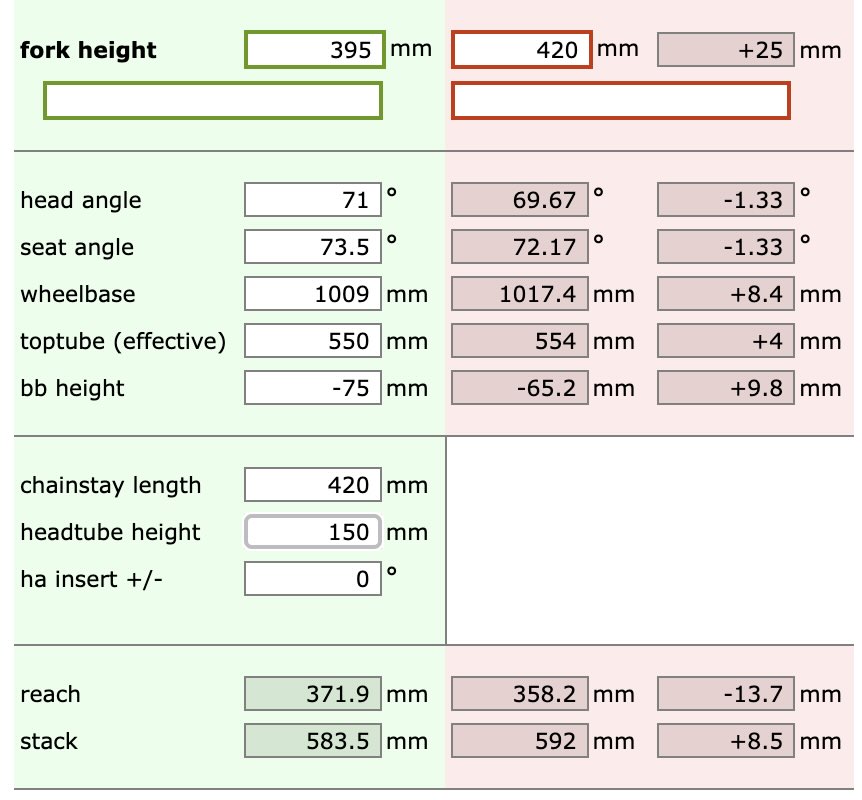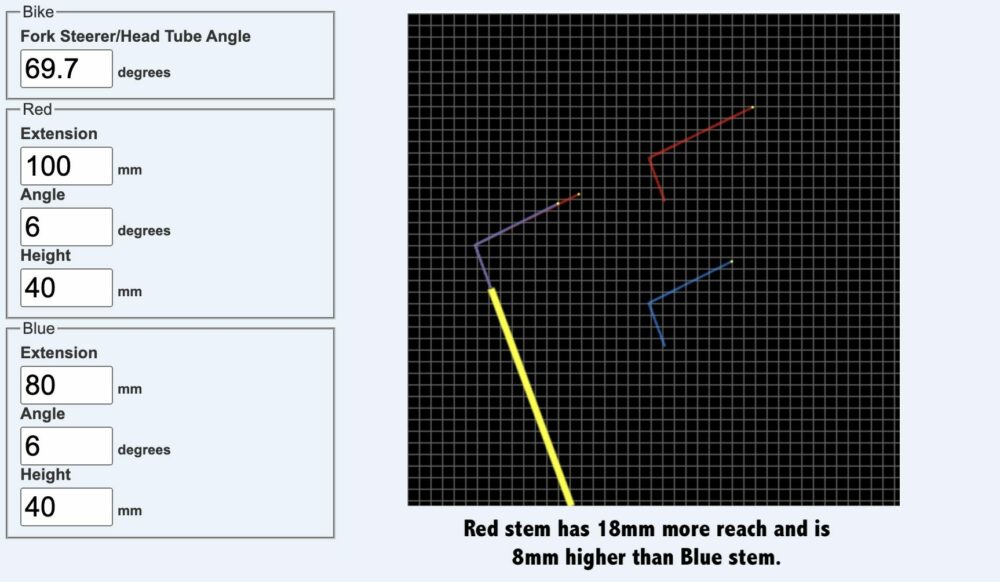Table of Contents
- What is the HiRide Sterra Gravel Suspension Fork?
- Tech Specs of the HiRide Sterra
- HiRide Sterra Fork Maintenance
- Installing the Fork
- The HiRide Sterra & Your Frame Geometry
- How Does The HiRide Sterra Perform?
- How Do Suspension Stems Compare to the HiRide Sterra?
- My Test Bike and Vibration Measurement Procedure
- Vibration Test Results
- Summary
The HiRide Sterra is a suspension fork that blends perfectly into the gravel bike aesthetic.
Gravel bikes have evolved significantly over the last few years. What started as a more capable road bike has now shifted into the mountain bike realm. And for some, that’s an exciting prospect. Mountain bikes can sometimes feel like overkill on bumpy, non-technical terrain, and they are not designed to fit drop bars, which are a handlebar type preferred by many on long rides.
Today, most gravel suspension forks look like trimmed-down MTB suspension forks. The HiRide Sterra, on the other hand, maintains the rigid carbon fork look while hiding a suspension element. This not only looks great but has performance and maintenance advantages over the competition.
In this review, you’ll find out more about this unique product. I’ll tell you how it rides and we’ll look at my vibration test data to determine if there is a significant comfort advantage.
What is the HiRide Sterra Gravel Suspension Fork?
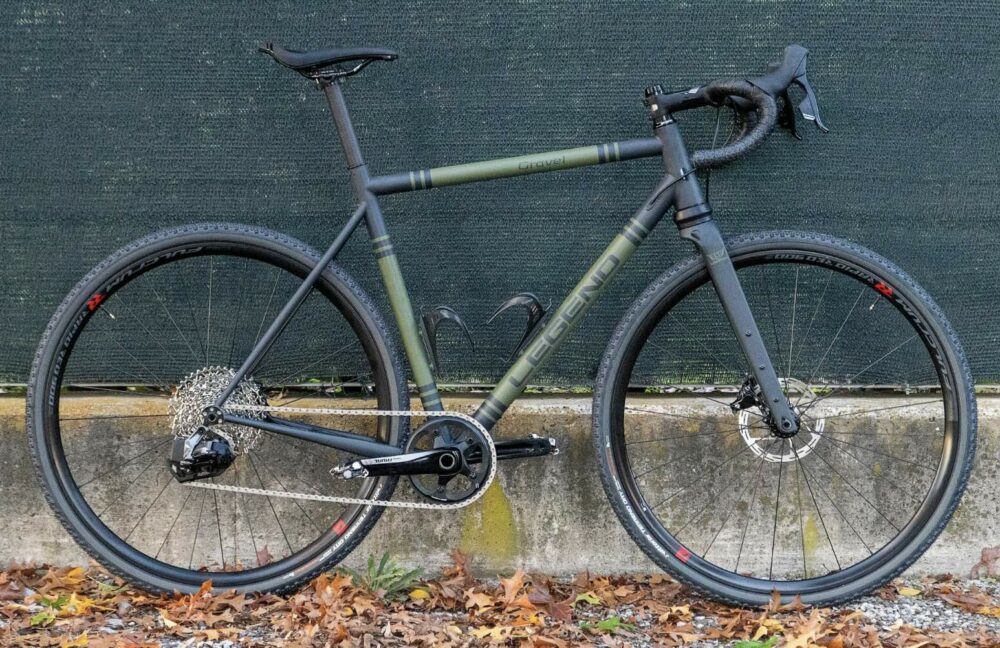
The HiRide Sterra combines the aesthetics of a regular carbon gravel fork with 20 mm of damped suspension travel. You might have already seen it featured on the BMC URS LT but it’s now available as an aftermarket upgrade.
A wonderful thing about this suspension fork is that the hydraulic damper and coil spring are hidden away from the elements. This results in service intervals that are significantly longer than typical telescopic suspension forks.
The Sterra not only has a clever design, but it means business. It’s tuned to add front tire traction and take the edge off bigger hits, all while passing the same international strength and durability tests as a mountain bike suspension fork.
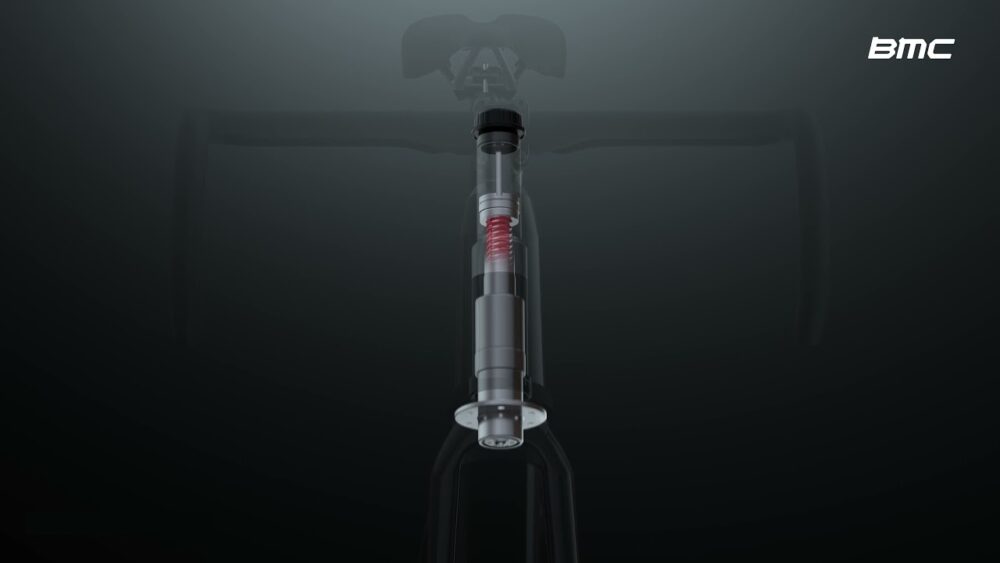
This is the most aerodynamic suspension fork available too. Air resistance is the greatest resistive force experienced at speeds over 18km/h, which is why one shouldn’t ignore aerodynamics on a gravel bike. While we haven’t tested the Sterra in a wind tunnel, bladed fork legs are undoubtedly faster than cylindrical ones.
You can lock out the Sterra fork quickly by using the dial at the stem top cap. This lock is easily accessible and ensures you waste no energy compressing the fork on smooth surfaces. And should you forget to unlock your fork on a rough road, there is a blow-off valve inside that will operate under big impacts, protecting the system (and your hands).
Tech Specs of the HiRide Sterra
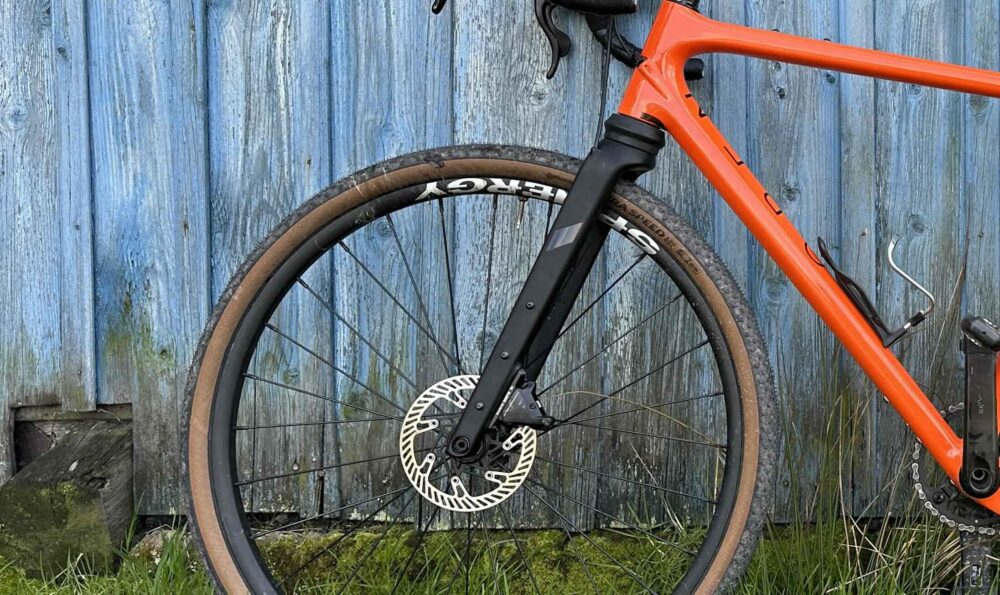
Naturally, the Sterra is heavier than a rigid carbon fork. But at 1,300 grams, it’s lighter than almost all gravel suspension forks except the Cane Creek Invert and Fox 32 TC.
There are three different spring rates (soft, mid, and hard) to match your body weight, riding style, and terrain. In addition, you can fine-tune the firmness of each spring by fitting pre-load spacers of different thicknesses (1, 3, 6mm). Changing the spring or spacers does take time and requires a special tool, but that’s included with the fork.
Outside of the springs and preload spacers, the Sterra fork offers little in the way of user adjustment. The compression and rebound speeds are pre-set at the factory.
The fork glides on bronze bushings that keep sliding friction (stiction) to a minimum. Grit is kept away from the bushings and seals with an external rubber cover. That said, the Sterra is effectively an upside-down suspension design, so gravity won’t work any grit inside the sliding components.
To fit the required suspension components inside the steerer, the Sterra employs an oversized 1 1/4” steerer size commonly found on Giant and Canyon bikes. Don’t worry, this oversized steerer still fits many gravel frames, it just requires you to use a smaller top headset bearing (MR136).
If you’re wondering about stems for 1 1/4”, Ritchey and Zipp manufacture them, and an FSA SL-K SLR stem can be provided when you buy this fork.
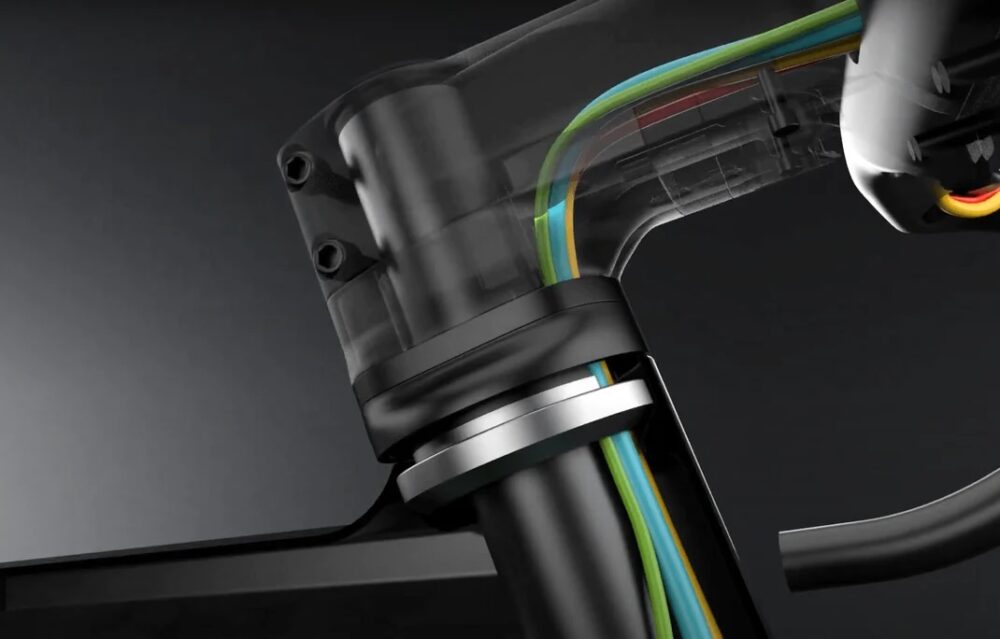
I should note that some gravel bikes with internal cable routing through the stem/headset are incompatible. There is a version of this fork that accepts cable routing through the stem (Sterra ICR) but for it to work, the headset bearing seats must be 1 1/2” on the top and bottom. I’d recommend contacting HiRide before purchasing to double-check for compatibility.
The fork is also longer than many rigid carbon forks; it has a 420 mm axle-to-crown at sag. I chose to fit it to my bike anyway, but to preserve your frame geometry, you would ideally only fit the Sterra to a bike that has been designed for 420 mm long forks. You can head to Bike Insights for an ever-growing list of bikes that will be suited to gravel suspension forks.
For bikepacking adventures, you’ll find the carbon fork blades have cargo cage mounts on each side. The fork is also equipped with internal cable routing for dynamo lights and USB charging.
The tire clearance of the fork is common amongst gravel bikes. Expect to squeeze in 45 mm (1.8”) on 700C wheels, and 54 mm (2.1”) on 650B wheels. The thru-axle is a standard 12×100 mm, it requires flat mount brake calipers and the fork will clear 160/180 mm disc brake rotors.
At 990 Euros, this is undoubtedly an expensive upgrade. But the deal is sweetened a little with the included stem and required headset to fit the fork to your bike.
HiRide Sterra Fork Maintenance
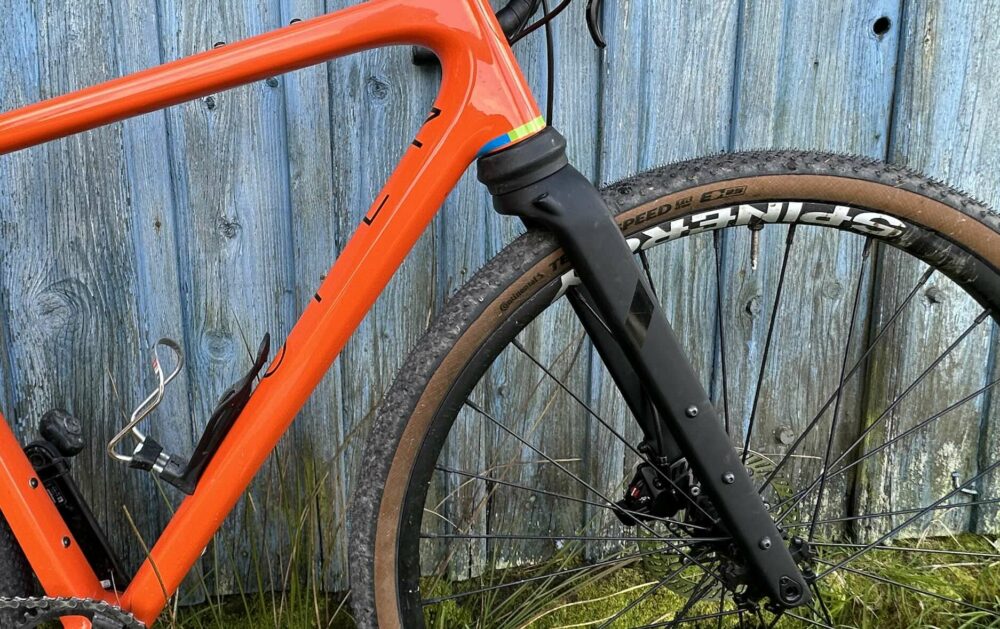
For many gravel cyclists, the regular service intervals of a suspension fork are a step too far.
Telescopic suspension forks like the RockShox Rudy ideally receive a “lower leg service” every 50 hours of use, and a “full service” every 200 hours of use. For most riders, this means that a full service falls once per year at a minimum, and a lower leg service more often than that (according to RockShox). Of course, you can choose to not service your fork, but its performance will diminish, and you will likely end up with a more expensive repair bill down the line.
The HiRide Sterra doesn’t require anywhere near as much maintenance thanks to its simple damper design that’s hidden away inside the head tube. The “hydraulic seal replacement” is ideally conducted every 500 hours (or three years) to keep it in prime working order. But we’ve been told it’ll likely perform well for much longer.
The only downside is that the hydraulic seal replacement can only be done by HiRide in Italy. This could be costly in terms of time and return postage, especially if you are not located in Europe. That said, HiRide plan to open service centres across the globe in the coming months.
Installing the Fork
Fitting the HiRide Sterra with its oversized 1 1/4” steerer isn’t always a straightforward process.
You can expect an easy fit on gravel bikes that use external cable routing, or internal cable routing that enters the frame via the downtube.
In my case, the brake and shift cables enter my Open WI.DE frame in the middle of the head tube, so I had to remove the cable frame insert to create space for the fork to fit. This is not an ideal long-term solution but is acceptable for my test purposes.
The HiRide Sterra & Your Frame Geometry
Gravel suspension forks often have a taller axle-to-crown than rigid forks, often by 20-30 mm.
In my case, the Sterra has a 25mm longer axle-to-crown at sag than my Open WI.DE rigid fork (420mm vs 395mm). It also features a shorter fork offset (45mm vs 50mm). The result is ultimately a slower steering speed with the HiRide fork fitted. For those who are interested in the numbers, the 1.3° slacker head tube angle, and shorter fork offset resulted in a ‘trail’ increase from 71 to 85mm.
To effectively speed up the steering again, I decided to reduce my stem length from 100mm to 80mm.
When all changes are accounted for, the new shorter stem and longer fork length result in a handlebar that’s 1mm higher than with the rigid fork and a saddle-to-stem distance that’s about 20mm shorter. This took a bit of time to get used to.
How Does The HiRide Sterra Perform?
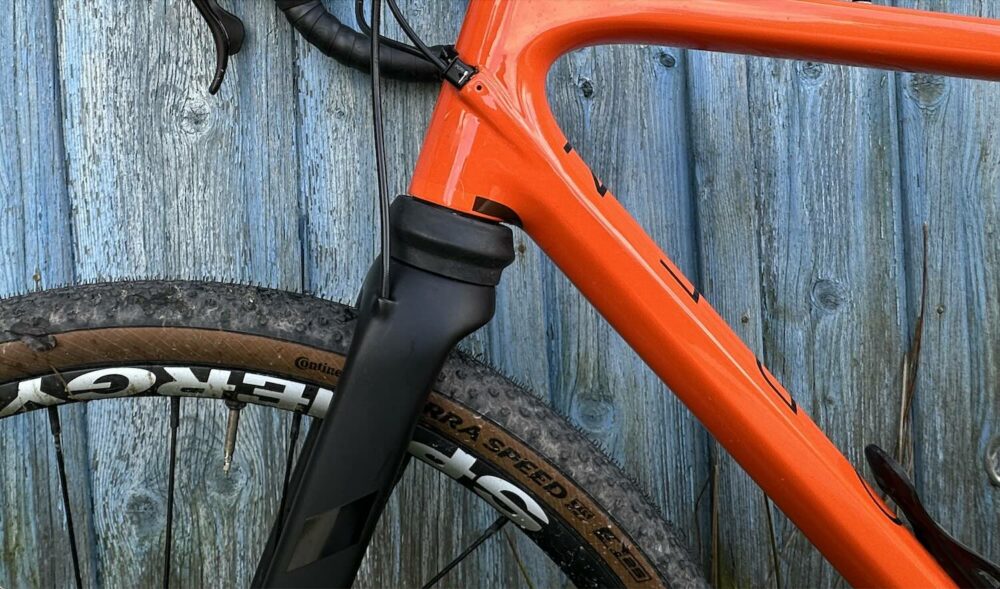
The combination of a coil spring and hydraulic damper worked superbly to take the edge off bigger hits. While 20 mm travel sounds like far too little, I never found I needed more on the terrain I ride – even on moderate single track.
The improved front tire traction made me ride more confidently, and as a result, I had more fun on my bike. I was quite amazed at how much quicker I could ride down twisty forest roads compared to my rigid bike. This shouldn’t come as too much of a surprise; I found the same thing when I tested the Lefty Oliver suspension fork.
The Sterra was stiff, it made no unwanted noises, it tracked straight, and didn’t bottom or top out either. While I did notice the extra weight over my rigid carbon fork, I never found it to be a deal-breaker.
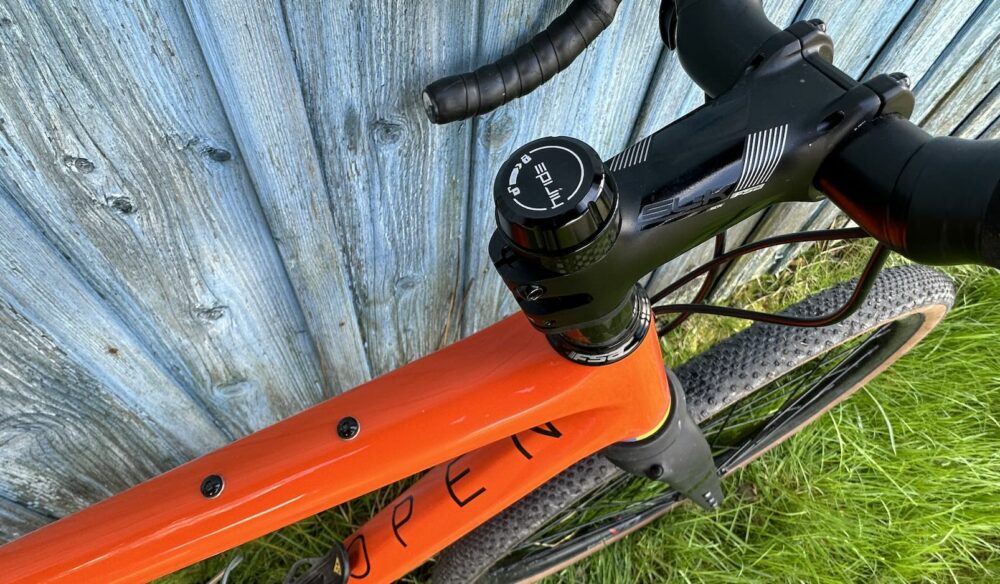
The Sterra has so little travel I could barely feel it bob under acceleration. In fact, I didn’t even think about locking it for most of my rides. It was only when riding up steep hills that I twisted the easy-to-access dial to preserve some energy.
One quirk I found was that the Sterra was sensitive to my hand position on the bars. When I was riding in the drops, it would compress with ease as I had more body weight over it. When I was riding in the brake hoods, I could still feel the suspension effect. But in the bar tops, not enough of my body weight was being applied to make the fork responsive.
I also found that over faster gravel roads with lots of high-frequency chatter, the HiRide handled this terrain less effectively than I would’ve hoped. This is likely a result of the fork having too much damping to mitigate high-frequency vibrations.
Overall, I was very happy with the performance of the HiRide Sterra, in particular, the additional front tire traction that improved grip and braking performance. It ultimately made rougher roads more pleasurable to ride.
How Do Suspension Stems Compare to the HiRide Sterra?
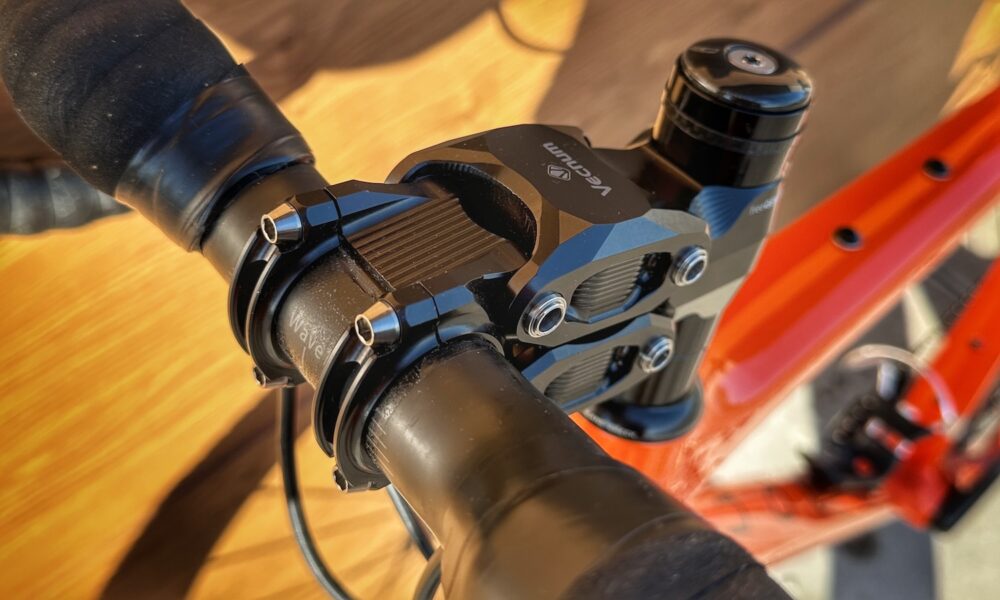
Over rough terrain, a suspension stem cannot offer the same level of grip or overall bike stability as a suspension fork. This is because a suspension fork suspends not only your upper body but the entire front of your bike, allowing you to generate more front tire traction and achieve better braking.
In addition, suspension forks use much more advanced hydraulic dampers, so they can absorb more energy after bigger impacts.
That said, through my testing, I’ve found that suspension stems are often better at absorbing the high-frequency vibration that you experience on fast gravel roads. This is because they require very little damping, which allows them to move virtually uninhibited over fast, repetitive bumps.
So, how does the HiRide Sterra stack up in my vibration tests?
My Test Bike and Vibration Measurement Procedure
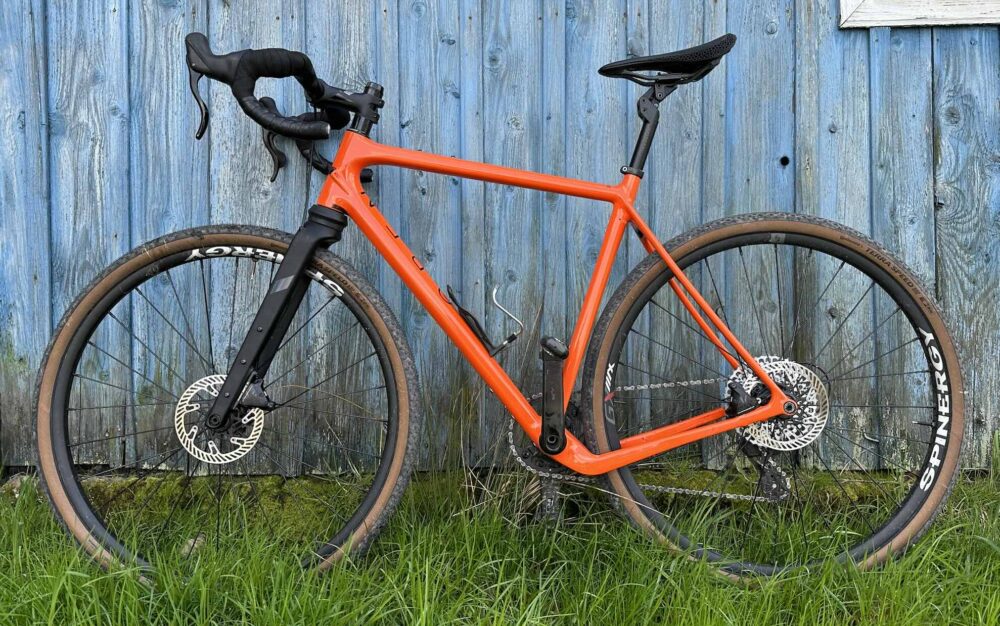
I conducted this vibration test on my Open WI.DE gravel bike fitted with both the HiRide Sterra fork and the Open U-Turn rigid carbon fork. The spring rate of the HiRide fork was set to my body weight and preferred riding style (medium spring).
I tested the suspension performance both unlocked (suspension can activate) and locked out (suspension cannot activate).
The handlebars were Coefficient Wave Carbon and the stem was an aluminium rigid stem (100mm). The tires were Continental Terra Speed 700C x 45 mm inflated to 40 psi (2.8 bar) and they were installed on a 700C Spinergy GX Max wheelset.
You can read more about my benchmark bike HERE.
I have two test scenarios: a big hit test that simulates riding across a 30 mm tall obstacle like a tree root or edgy rock, and a high-frequency chatter test that simulates riding on a bumpy gravel road.
You can read more about my vibration measurement procedure HERE.
Vibration Test Results
Big Hit Test

| Average Acceleration (g) | Vibrations When Compared to the Rigid Stem | |
| Carbon Rigid Fork | 3.24 | – |
| HiRide Suspension – Locked | 3.38 | 4.3% More Vibration |
| HiRide Suspension – Active | 2.87 | 11.4% Less Vibration |
In the big hit test, the HiRide Sterra demonstrated its ability to mitigate the shock effectively – I recorded 11.4% less vibration at the handlebar when compared to the rigid carbon fork.
When comparing the rigid carbon fork and the locked HiRide suspension fork, I found 4.3% more vibration with the latter. This is likely due to the stiffer fork legs of the HiRide Sterra that flex less on a big hit and damp less vibration as a result. But this is not a very important measurement if you remember to unlock your fork!
Finally, when the HiRide was active compared to locked out, there was 17.8% less vibration at the handlebar. This demonstrates that the suspension damper is indeed working well in my big hit test.
High-Frequency Chatter Test

| Average Acceleration (g) | Vibrations When Compared to the Rigid Stem | |
| Carbon Rigid Fork | 2.61 | – |
| HiRide Suspension – Locked | 2.59 | 0.8% Less Vibration |
| HiRide Suspension – Active | 2.45 | 6.1% Less Vibration |
In the high-frequency chatter test, the HiRide suspension fork reduced the vibration at the handlebar by 6.1% when compared to the carbon rigid fork. This is a smaller comfort difference than I was hoping to see. I suspect there is a bit too much damping in the fork for it to do well in this test.
When I locked out the HiRide suspension fork, it recorded just 0.8% less vibration than the rigid carbon fork. This will be too small a difference to notice for even the most experienced of riders, but again, it’s not too much of a concern if you remember to unlock your fork.
Summary
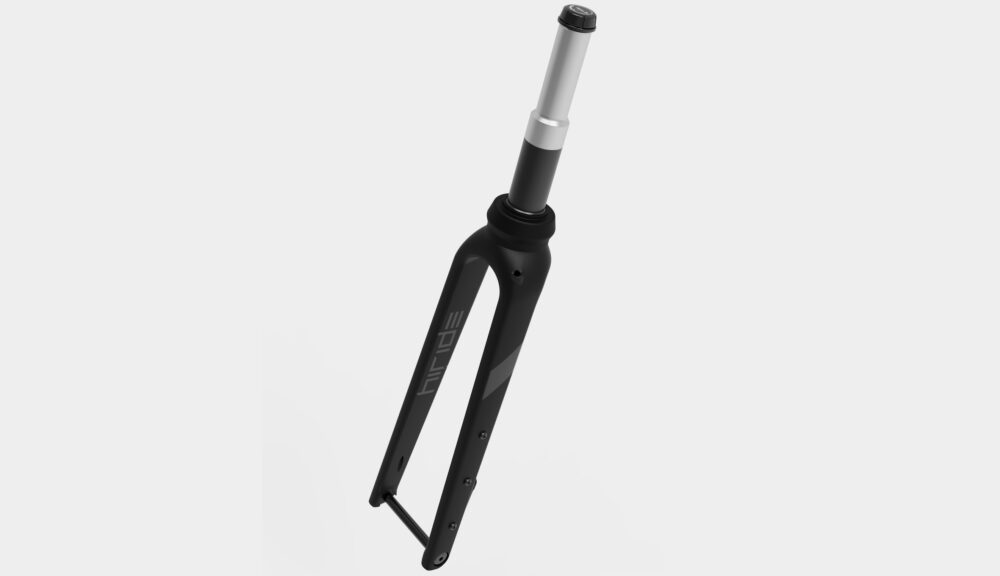
The HiRide Sterra is the neatest, lowest-maintenance, and most aerodynamic gravel suspension fork that money can buy. Even with just 20mm of damped travel, it can transform your gravel bike into a more capable machine. You might even find it hard to go back to a rigid fork after trying it!
That said, if you’re looking for a significant boost in comfort on fast gravel roads, I don’t think you’ll find it with this fork. My vibration test results suggest a 6.1% improvement over a high-end carbon fork, which is a smaller improvement than I’ve found with other components (notably the Kinekt stem).
But the story is much more complicated than that. The suspension damper very effectively reduces vibrations on big hits and improves front tire traction and braking performance too. This encouraged me to ride on rougher roads and trails than I’d typically go for on my gravel bike, making my bike more versatile.
That’s why I plan to keep the Sterra fork on my benchmark bike for now… but with a little twist.
I’m currently testing the suspension fork in combination with a suspension stem and finding the stem can absorb more high-frequency buzz while the fork takes care of the bigger hits. This combination might just take gravel riding to a whole new level.
But that’s a topic for another article.


